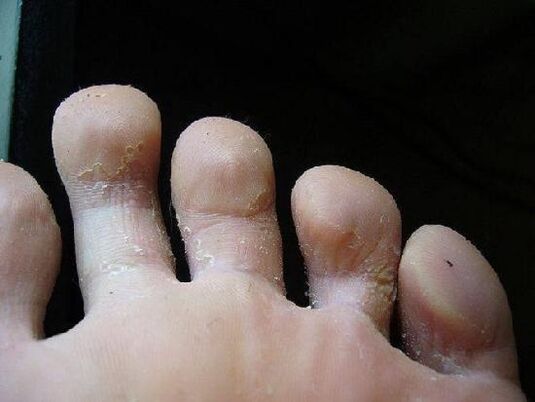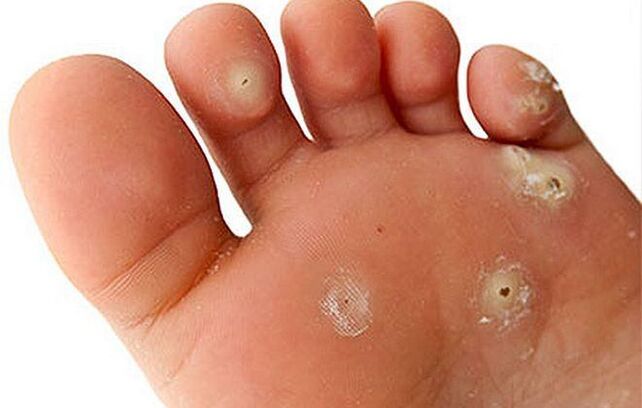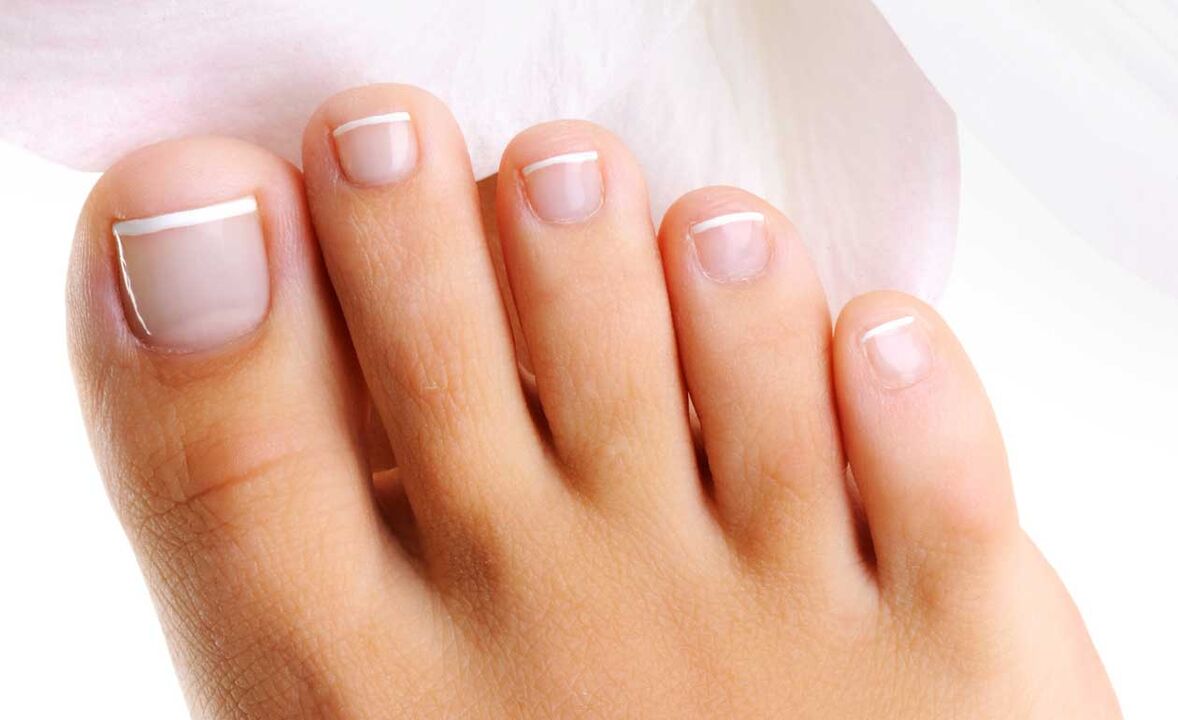Fungus on the feet is a seasonal disease and most importantly appears during the season of wearing closed shoes. Fungal infections on the feet do not attract as much attention as other types of fungi, such as nail fungus. This is because the foot cannot be seen unless you look at it specifically. And the first, not a strong manifestation, is associated with everyday reason.
The easiest way to test yourself for foot fungus is to sniff your shoes! Unpleasant odor is a sign of a fungal infection. Although the fungus itself does not emit an odor, but its waste products. . . Plus the waste products of microorganisms that have settled in wounds formed by fungal diseases. And most of them are staphylococci. All of this is taken together which causes an unpleasant odor from shoes and feet.
Brushing the skin on the affected area leads to the spread of infection!
When the feet are in warm and covered shoes for a long time, they sweat profusely. The fungus, which under normal conditions is not activated, once in an ideal environment for itself, begins to grow actively. Thus, the second name of the disease appeared - "Athlete's foot". Fungal diseases of the feet, and are caused by several types of fungi. And because athletes spend most of their time with tightly closed shoes, they mostly suffer from this mycosis.
Athlete's feet are quite normal. Thus, a fungal infection of the soles of the feet or the skin area between the toes occurs.
Such mycoses can be caused by the appearance in one of the types of parasitic colonies of an infectious and highly contagious disease called fungus on the feet.
Fungal diseases that cause extensive skin lesions are provoked by various types of fungi, the nature of which is found in analytical studies.

How the fungus appears
On the skin of the feet, the pathology appears initially in small areas that tend to flake off, then the spots spread with uneven edges and mycosis becomes more pronounced.
The activity of the manifestation of fungal symptoms on the feet can be as fast as lightning and quite damp. Because it all depends on how strong a person’s immunity is and the type of microorganism that causes the disease.
The types of foot fungus are quite different and they manifest themselves in their own way, but if a person experiences pathological changes in the feet, then you should find out from a specialist what the cause is. A mycologist will explain what a fungus is and teach you how to fight it.
What is Foot Fungus Like?
Foot fungus is accompanied, in most cases, by "athlete’s foot" - it looks like invisible skin. As the pathology spreads, the skin color changes to red, and the changes become more pronounced. Further, foot disease looks like a large area with large dry skin, sometimes the symptoms are located on one side, sometimes on both sides of the foot. The localization of the foot fungus is usually located in the lower part of the limb, and how the limb looks depends on the stage of pathological development.
What is considered are species differences such as:
- very dense stratum corneum on the soles of the feet;
- the flakes begin to peel the honey with the fingers;
- inflamed skin;
- foot lesions also look like foam.
The fungus that forms on the feet looks quite expressive, so one should pay attention to certain manifestations and consult a doctor.

Causes of foot fungus
What to do if fungus appears? For starters, it’s good to know the reasons for its appearance and figure out where exactly the spores can be picked up and why the body isn’t responding properly.
On how the formation of athlete's foot begins, on the reasons that precede the development of pathogenic flora, mycologists say the following: fungus on the feet of the feet can develop if a person wears socks or shoes of an infected person, and also does not wear slippers in places inwhere many people pass, i. e. in public baths, saunas and swimming pools, because that is where the soil is best for the bacterial front.
How to identify fungus on the feet
The development of mycosis, a fungal disease provokes at a fairly high rate, and especially quickly such manifestations occur if there is a corresponding chronic disease. Foot disease can be determined independently, but in order not to confuse any skin abrasion with signs of fungus on the feet, it is necessary to carefully consider the condition of its covering, as well as how the skin looks under the toes.
Fungi on the feet are quite diverse in their symptoms, because the types of fungi on the feet are also not limited to only one, and each has its own characteristic manifestations.

What kind of fungus on the feet
And how the skin fungus on the feet looks will determine its type. Therefore, the mycelium will leave a "calling card" upon arrival.
Sometimes people with a history of such pathology don’t even know about it, they just see the cover that is too dry on their feet, but they mean it that way.
Common symptoms usually look like this:
- microcrack appearance;
- slight itching, especially between the toes;
- severe exfoliation;
- sometimes swelling and pain in the place where erosion occurs;
- rare, but bleeding occurs.
- deep cracks may appear.
How to cure foot fungus
Treatment of fungus on the feet is a long process, but if the stage of preparation is done correctly, that is when diagnosing is found that pathogenic parasites in the body, then the therapy can be faster.
It is necessary to treat skin fungus thoroughly, using both drugs taken by internal and external medical pharmacological agents.
Athlete’s foot can be treated with careful study of all affected areas, this should be facilitated by undergoing treatment.
On how to treat fungus, you need to consult a mycologist. They will be able to discuss in detail which medications can cure the disease well.
The treatment of foot disease can be divided into several parts. The main important task is to strengthen the most vulnerable areas and rehabilitate the affected areas. It is important to know that the feet must always be dry and clean:
- and also shoes shall be made of breathable material;
- replaceable cotton socks should be good absorbers that collect moisture;
- after the foot is in the shoe all day, it is necessary to rinse it clean and lubricate it with a special agent prescribed by a doctor.
It’s also great to use a special powder that helps keep your feet dry.
The next part of the treatment involves the use of antifungal medications, such as:
- ointment with a special composition;
- creams with a lighter texture than ointments, which means with a deeper angle of penetration;
- aerosols, the smallest particles that penetrate the most difficult places to pass.
And although almost all pharmacological preparations intended to eliminate pathogens are sold in retail pharmacy chains without special prescriptions, nevertheless, consultation with an experienced specialist will not only be superfluous, but, conversely, will help the complex effect of the disease.
The most common reasons where treatment does not work are, first of all, disrupted treatment regimens and irregular use of funds.
There are also the following reasons:
- many patients do not understand how serious the disease is and do not accept treatment recommendations;
- about a third of sick people do not go to a specialist at all, and from time to time they use their own medicine, which, for obvious reasons, does not bring relief;
- many patients do not believe that it is necessary to diagnose a pathogen accurately;
- many, as soon as the first positive result is achieved, stop treatment on their own.
How foot fungus is treated with folk remedies
You can also treat fungus on the feet with folk remedies at home.
There is a good tool, you can do it yourself.
Ointments that damage foot mycosis well:
- vinegar starch - 110 grams;
- a raw egg;
- butter - 200 grams (better to take natural farmers).
Scrub with absorbent from kitchen shelf:
- Soda;
- drunk coffee;
- ground oat rolls;
- cornflour.
Such components, incorporated into the foam, can be an excellent helper when sanding the skin of the feet. They are great for exfoliating skin particles and freeing areas that need to be treated from unnecessary layers.
Compress with anesthetic solution.
Gauze compresses are soaked in an anesthetic solution and strengthened on the feet at night. In the morning, the bandage is removed, and the affected area is treated with a decoction of chamomile. Repeat for 7 days.
If you study this topic well, then foot diseases can be treated with folk remedies, and skin fungus on the feet will pass without a trace, without the possibility of recurrence.

As a result of more advanced foot skin mycosis
Treatment of skin fungus on the feet should be thorough and timely, otherwise the following complications may occur:
- the parasitic element itself, as well as the product that remains after its vital activity, increases the risk of allergies in patients;
- the course of dermatitis can be complicated by the occurrence of eczema and psoriasis;
- because the skin is severely injured, the infection penetrates uninterruptedly into the lower layers of the epidermis and provokes the emergence of lymphostasis.
With athlete’s foot, warts appear more frequently and hyperkeratosis can form.
Preventive measures
Foot fungus, or rather its occurrence, can be prevented.
First, the use of ointments and folk remedies is an additional protection, and then the treatment of the fungus, even if it occurs, will be carried out according to a simplified scheme.
And also need to do the following steps:
- eat as prescribed by a healthy lifestyle;
- adhere to hygiene procedures;
- strengthen the body's immune defenses;
- practice precautions.





























